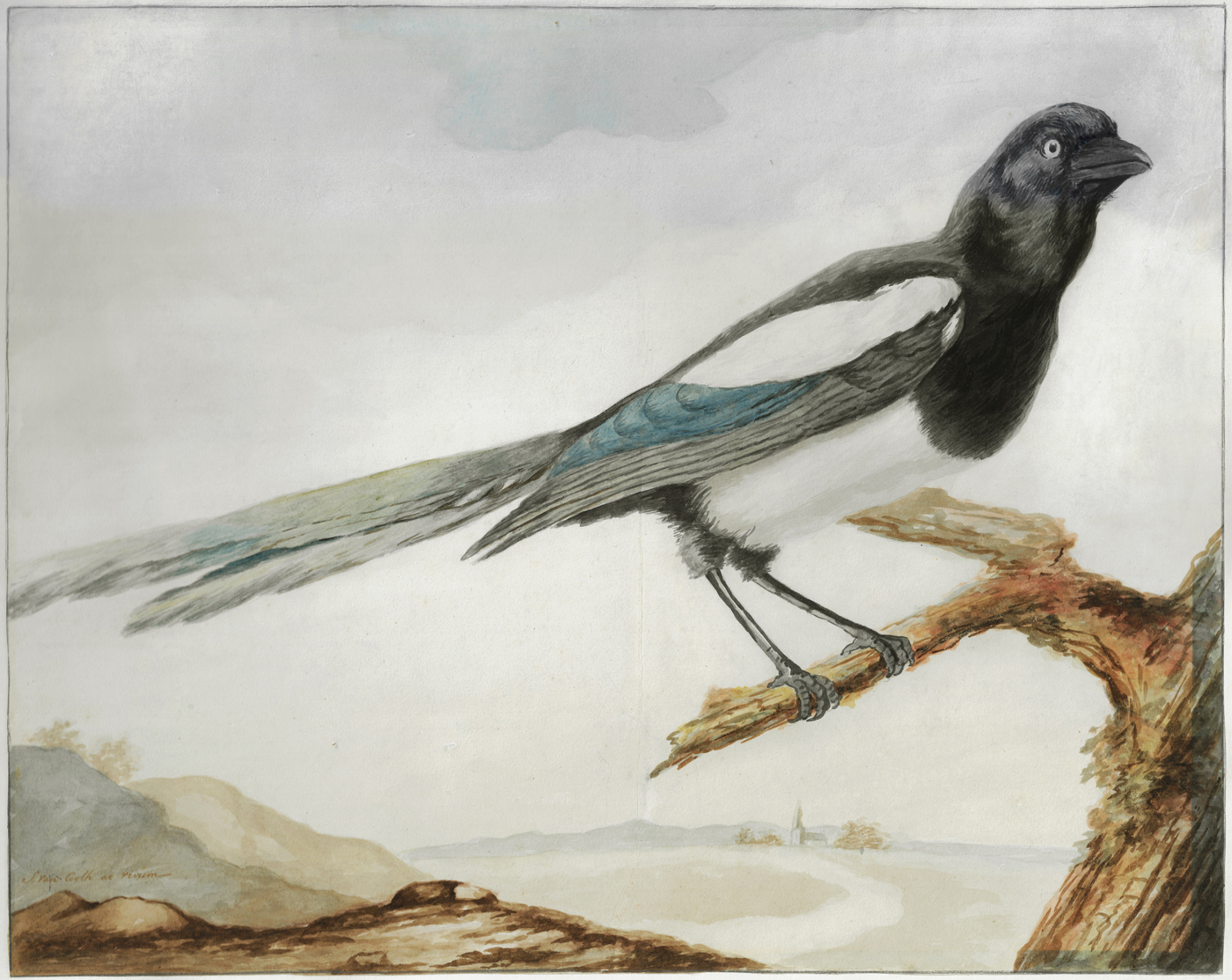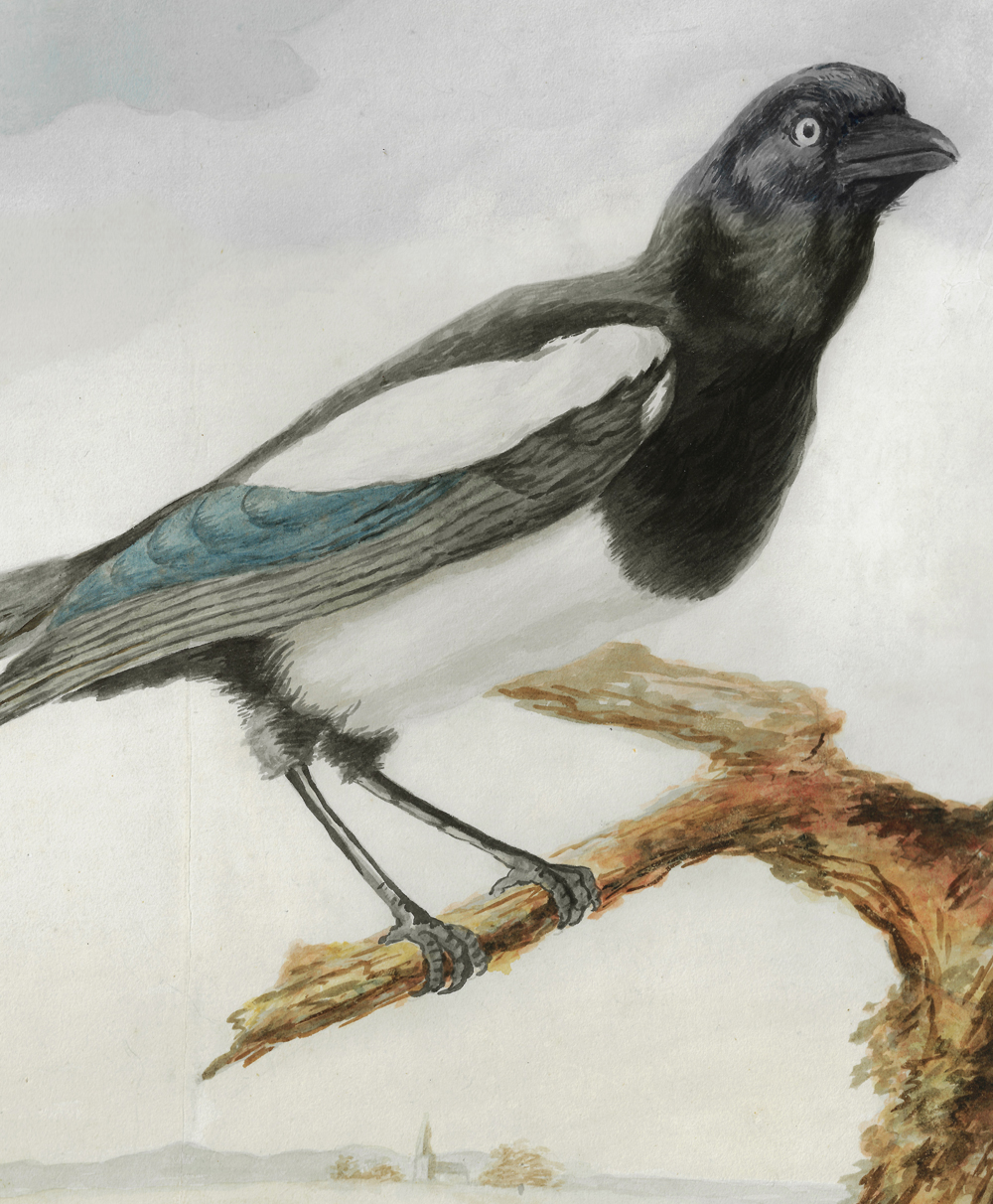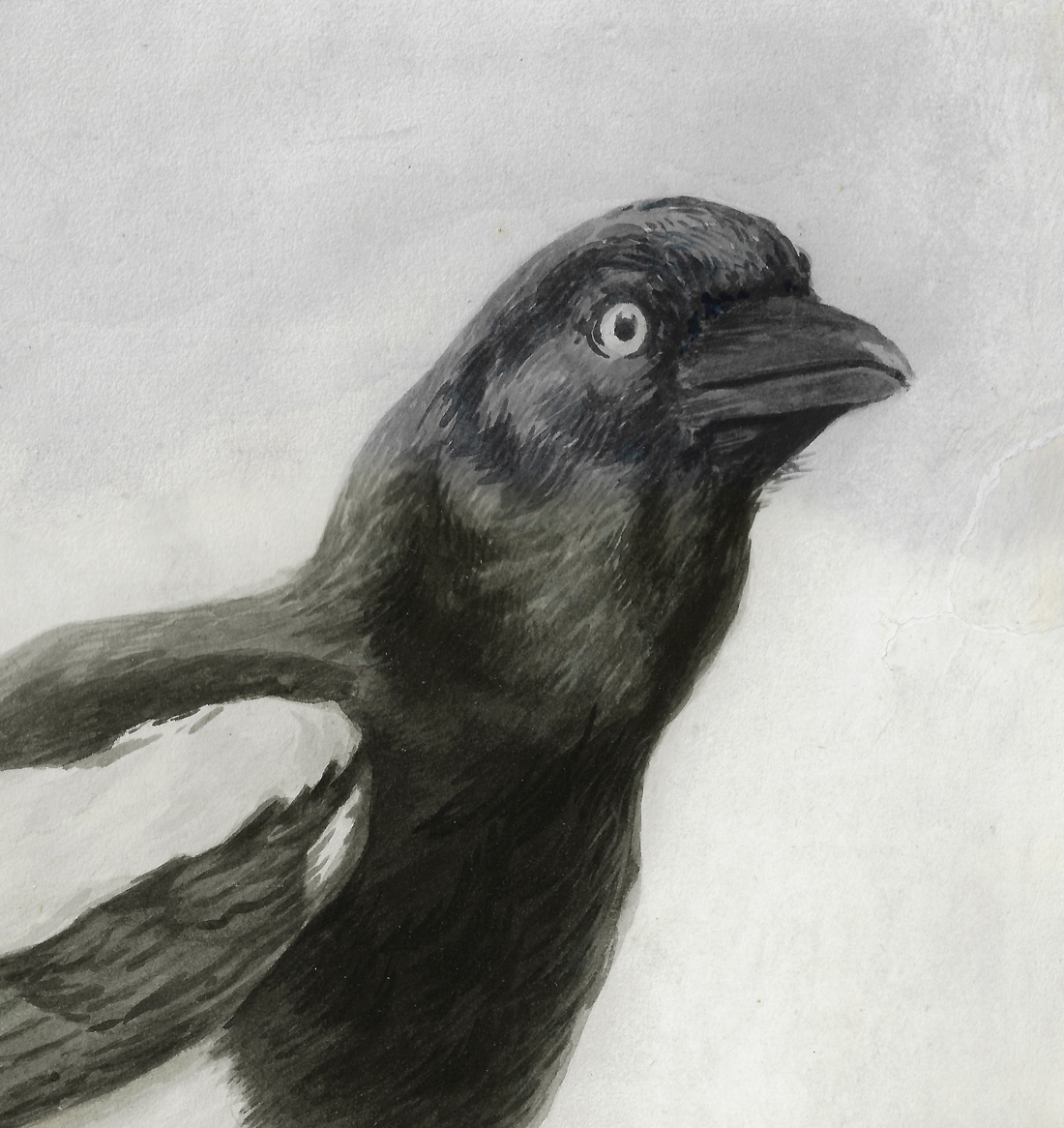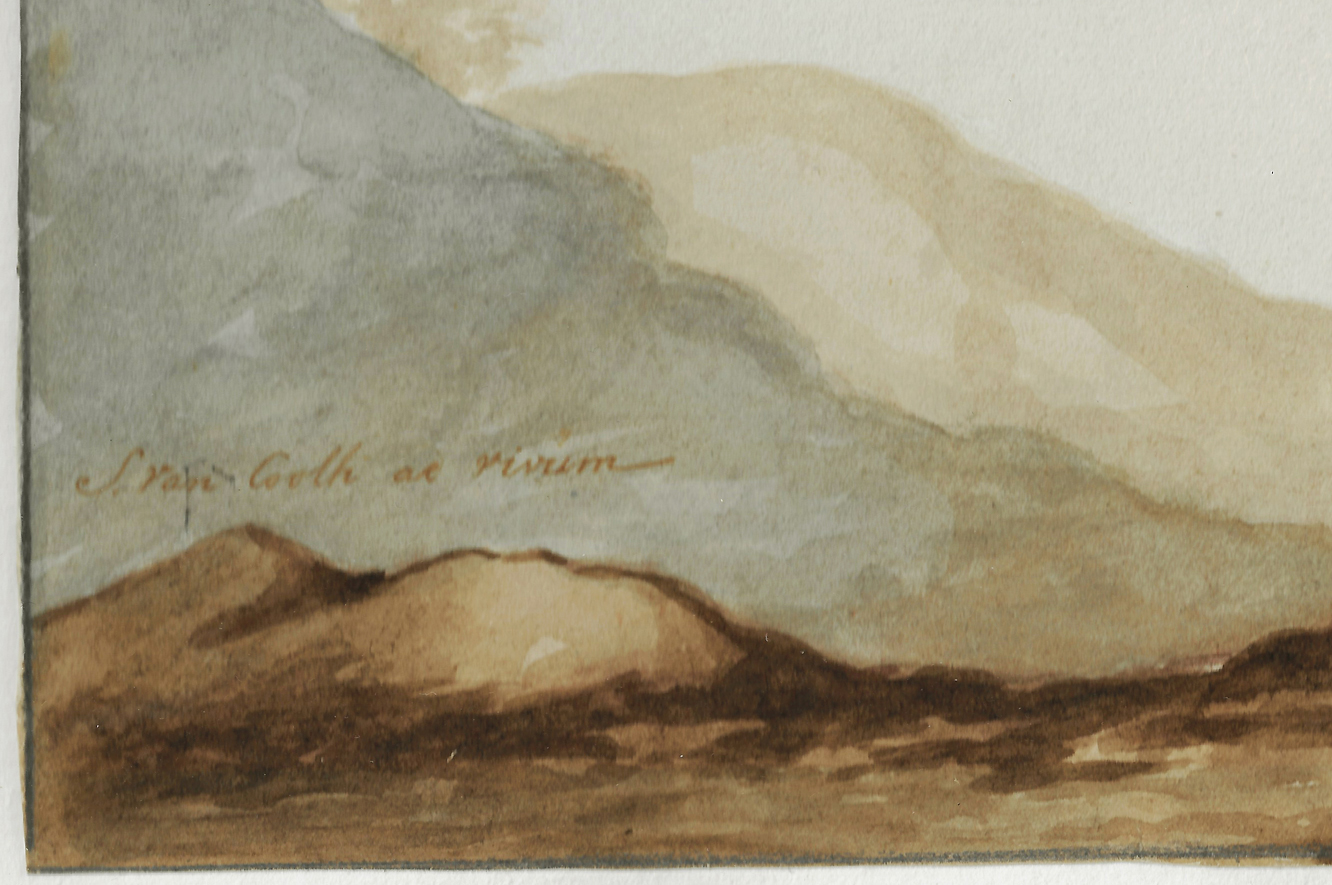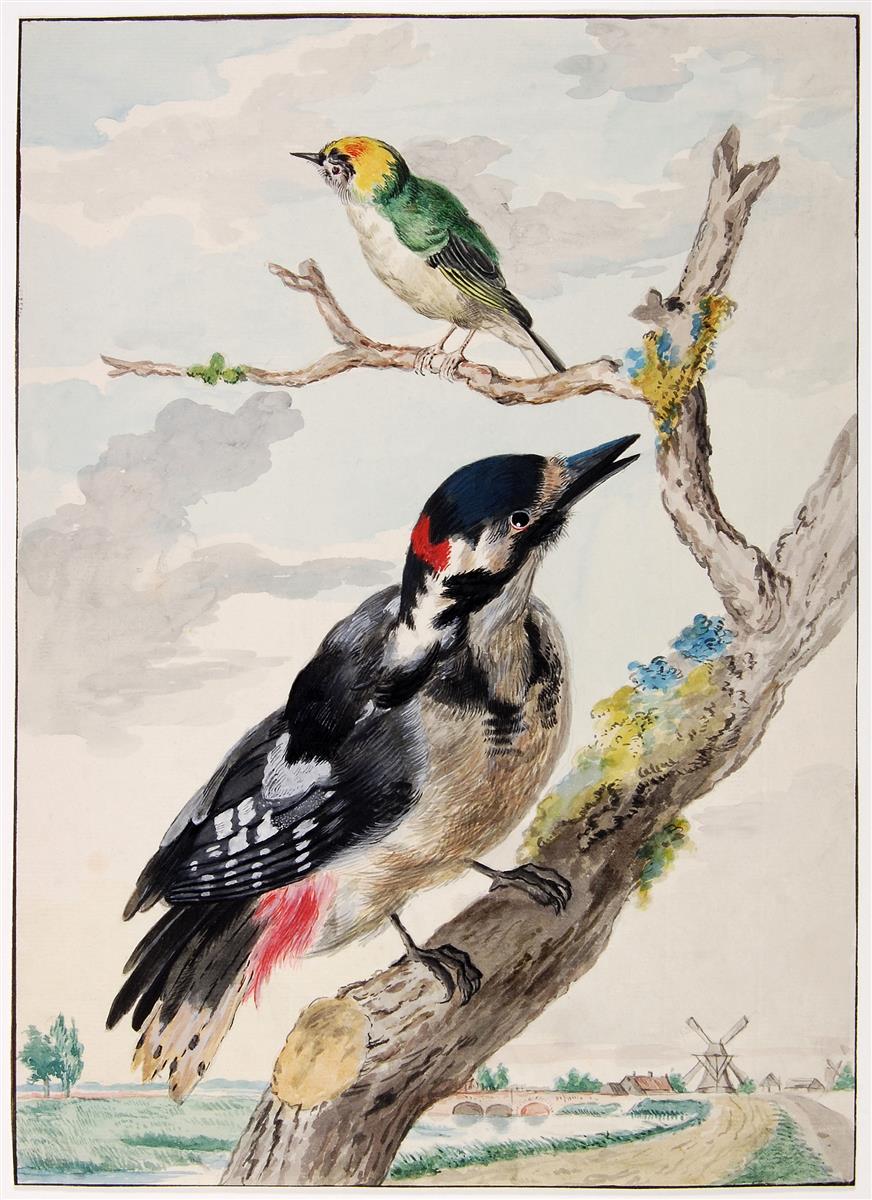STANISLAUS VAN COOTH (Harderwijk 1718 – 1786 Etten)
Stanislaus van Cooth (Harderwijk 1718 – 1786 Etten)
A Magpie on a Branch
Watercolour, grey ink, grey ink framing lines, 331 x 413 mm (13 x 16.3 inch)
Signed ‘S. van Cooth ac vivum’ (pen and brown ink, lower left)
Provenance
Private collection, The Netherlands
***
This powerful and impressive sheet is the only known work by the hitherto unknown amateur artist Stanislaus van Cooth. Born in Harderwijk in 1718 as the son of Everhardus van Cooth and Elisabeth Benningha, the patrician Van Cooth studied medicine in Harderwijk and established himself as a medical doctor in Boxmeer, and then became ‘landsfysicus’ of the Prussian Gelderland and ‘proto-medicus’ of the province’s ancient ‘ridderschap’ foundations. In 1745 he married Aleijda Maria van Rosendael, who bore him at least eleven children – all their daughters died young, but several sons grew up to pursue careers as priests, apothecaries and lawyers. Stanislaus van Cooth died in Etten in February 1786 and was buried in the central aisle of its church, opposite the pulpit, while a panel with his painted coat-of-arms was hung on a church pillar.1
Until recently, the artistic pursuits of Doctor Van Cooth were limited to a few poetic verses, extolling the virtues of some of his female acquaintances, including Maria Magdalena Zum Kley and Dorothea Ludovica de Raet.2 The present recently discovered watercolour has highlighted another of his interests, drawing and painting, perhaps not unlikely for a medical doctor. The sheet with its powerful rendition of an alert European magpie is strongly reminiscent of drawings by the Dordrecht artist Aert Schouman (1710–1792), a near-contemporary of Stanislaus. Like many artists during the period, Schouman provided drawing lessens to interested amateurs from prosperous families. Some of these teaching sessions are recorded in a number of notebooks kept by Schouman, which sadly do not span the whole of his artistic career. From these, we know the artist taught three girls from the Dordrecht notable Pompe van Meerdervoort family, and other members of the De Witt and Van Slingelandt dynasties.3 For most if not all of these pupils, no works are known today. Schouman also taught pupils during his sojourn in The Hague, including Wouter Dam (1726–1786), who paid the artist four guilders per month in 1739 for drawing lessons.4
Although such paid lessons are not documented for Stanlislaus van Cooth, the extremely Schoumanesque handling of the present drawing would make it likely that he did indeed take lessons with this artist, although it is possible that he was simply influenced by Schouman’s drawings. The large-scale and loose treatment of the bird indicate a talented and confident hand. The artistic quality is such that if Van Cooth had not signed the drawing, it would most likely have been attributed to Schouman himself or to one of his most notable followers, such as the Middelburg artist Abraham Meertens (1747–1823). Our drawing can for instance be compared to Schouman’s watercolour Two Birds in a Tree in the collection of the Dordrechts Museum (fig.).5
1. We are grateful to the artist’s descendant S.J.W. van Cooth for extensive documentation on Stanlislaus van Cooth. We are also grateful to Charles Dumas for his valuable remarks about this sheet.
2. Tijdschrift voor Noordbrabantse Geschiedenis en Volkskunde (ed. W.J.F. Juten), vol. V, 1898, p. 310-311.
3. Charles Dumas (ed.), Een koninklijk paradijs. Aert Schouman en de verbeelding van de natuur, exh. cat. Dordrecht (Dordrechts Museum) 2017, pp. 17-18.
4. Dumas, loc. cit.
5. Watercolour, 349 x 248 mm, inv. no. DM/960/T240.
